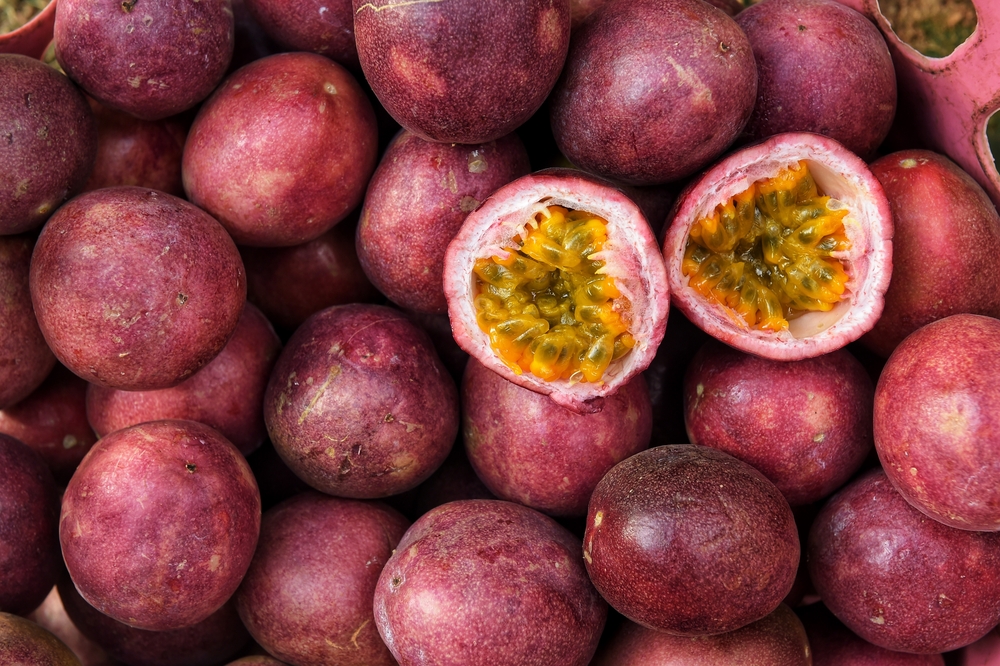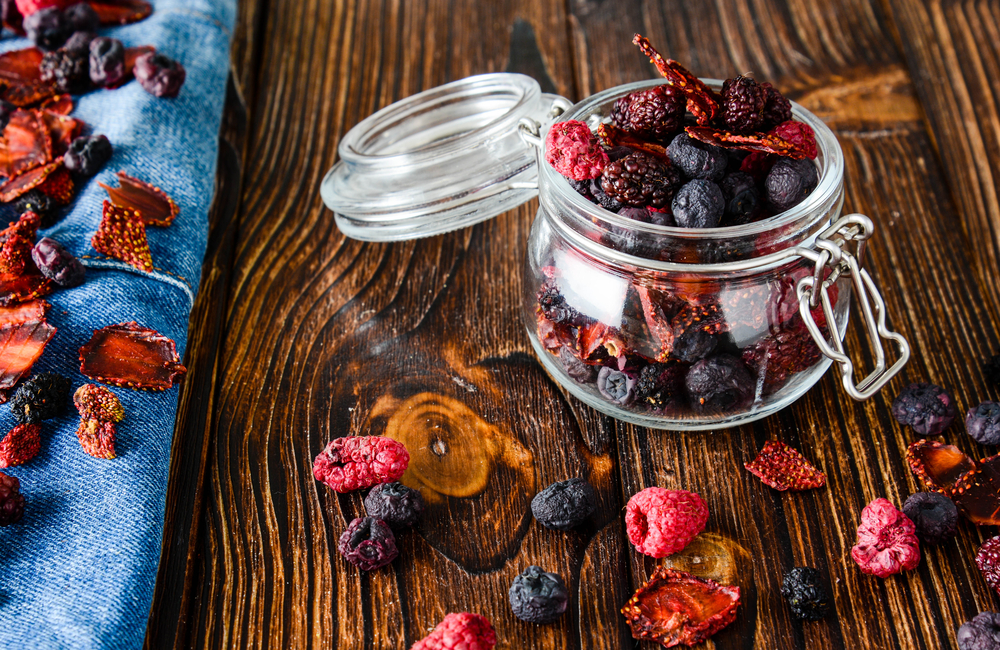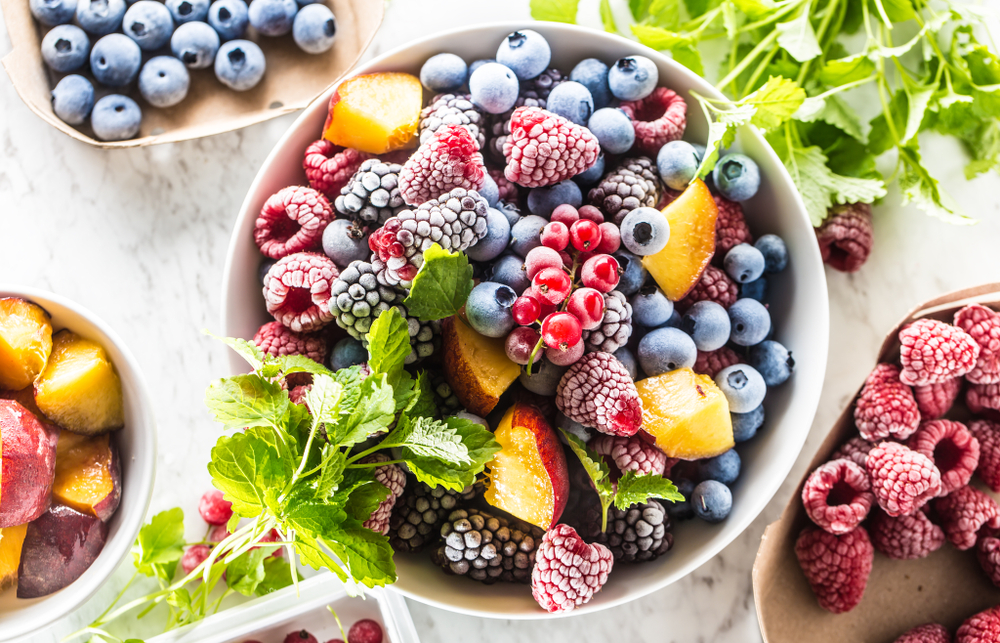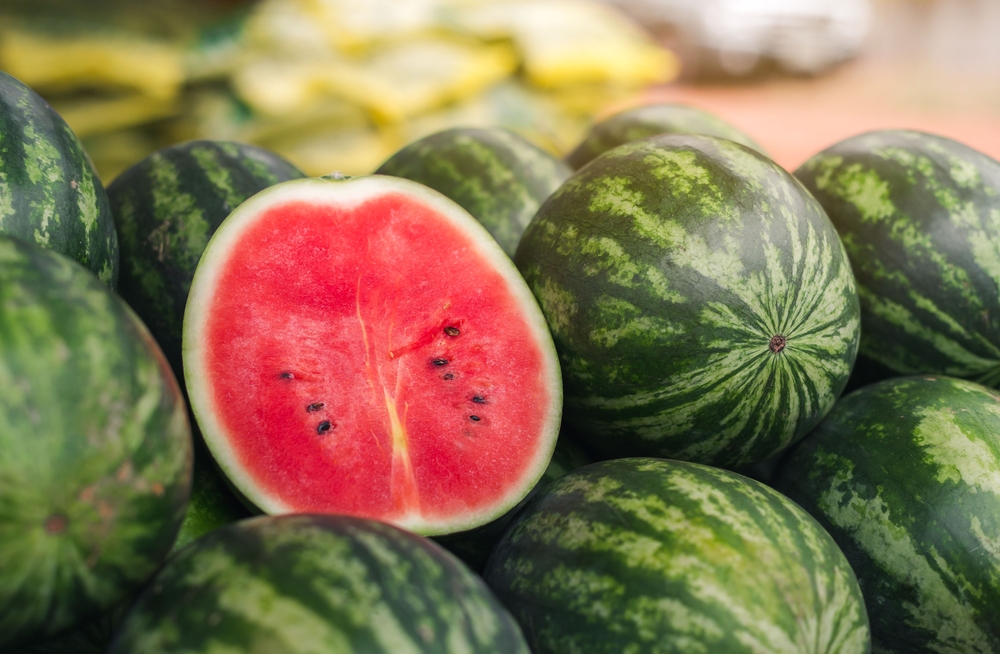As someone who loves berries, I’ve always wondered: do berries have seeds? The answer is not as straightforward as you might think.
While some berries have seeds, others do not. In this article, we will explore the different types of berries and their seed structures, as well as their nutritional value and culinary uses.
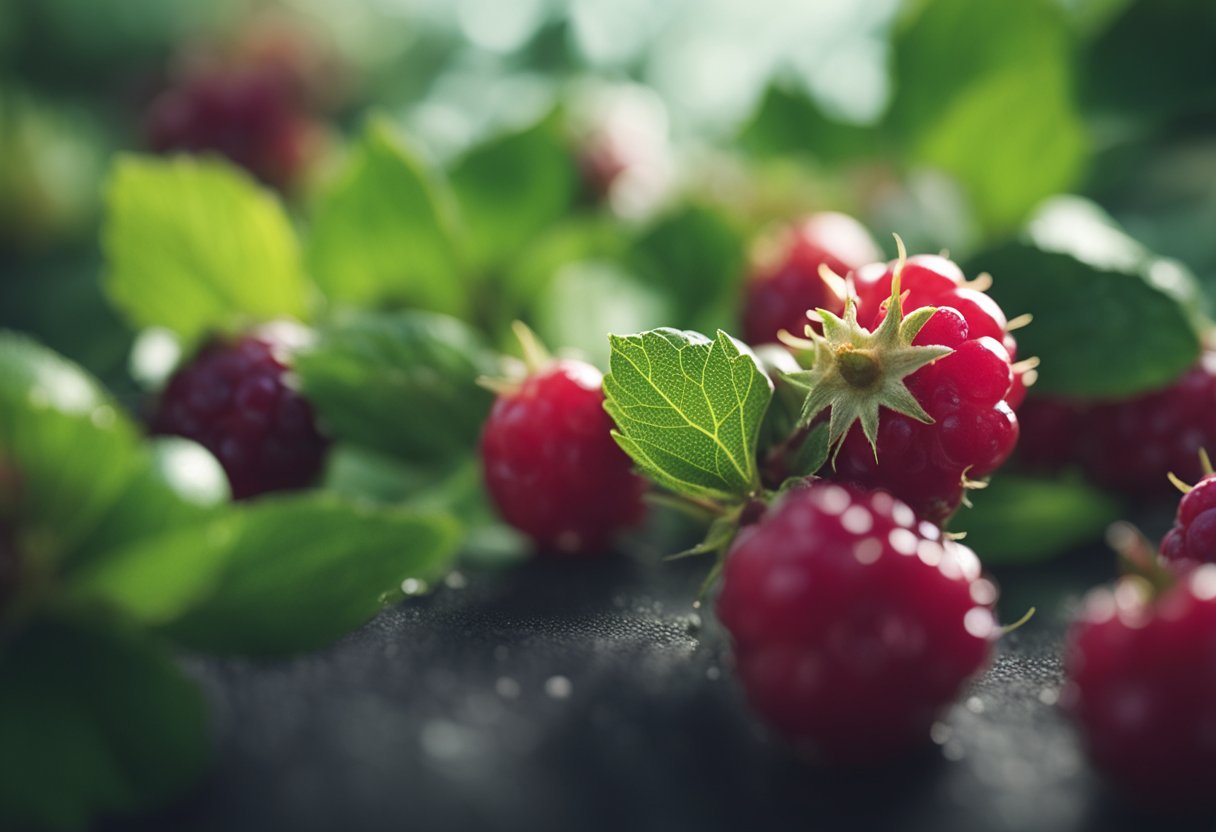
Understanding Berries First, let’s define what we mean by “berries.” By botanical definition, a berry is a fruit that is produced from the ovary of a flower and has seeds and fleshy pulp.
However, not all fruits commonly referred to as “berries” fit this definition.
For example, strawberries and raspberries are not true berries because their seeds are on the outside of the fruit, while bananas and grapes are considered berries because they have seeds on the inside.
Types of Berries There are many types of berries, including strawberries, raspberries, blueberries, blackberries, cranberries, and elderberries, just to name a few.
Each type of berry has its own unique flavor and nutritional profile. Some berries are high in antioxidants, while others are a good source of fiber or vitamin C.
Key Takeaways
- Berries are not all the same, and some do not have seeds.
- There are many different types of berries, each with its own nutritional profile.
- Berries are a versatile fruit that can be used in many different ways, from smoothies to desserts.
Understanding Berries
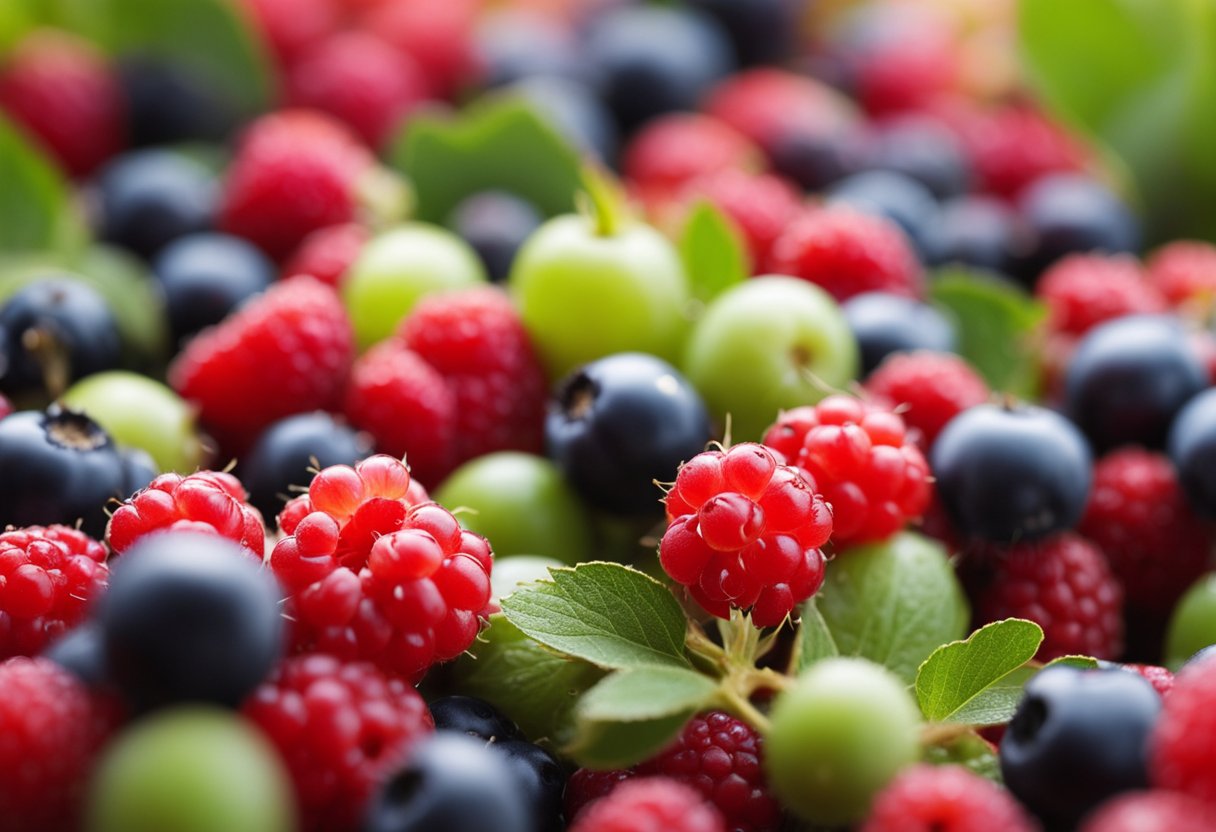
As a gardener, I know that berries are a popular fruit that many people enjoy. But what exactly is a berry?
According to the botanical definition, a berry is a fruit that is produced from the ovary of a flower and has seeds and fleshy pulp.
Some common examples of berries include strawberries, blueberries, raspberries, and blackberries.
However, not all fruits that we commonly refer to as berries are actually berries according to the botanical term. For example, grapes and bananas are not berries, while tomatoes and pumpkins are.
Berries are a great source of vitamins, minerals, and antioxidants. They are also low in calories and high in fiber, making them a healthy snack option.
However, it is important to note that some berries, such as elderberries, are not safe to eat raw and should be cooked before consumption.
In terms of seed content, berries typically have small seeds inside them. The size of the seeds may vary slightly depending on the variety of berry, but they are always present.
Some berries, such as strawberries, wear their seeds on the outside of the fruit, but these “seeds” are actually tiny fruits that contain a minuscule seed.
Overall, understanding the botanical definition of a berry can help clarify which fruits are true berries and which are not.
Berries are a nutritious and delicious fruit option, and their small seed content makes them easy to eat and enjoy.
Types of Berries

Berries are a type of fruit that are soft, round, and usually have a juicy pulp. Most berries are sweet, but some can be sour or tart.
They are a popular ingredient in desserts, jams, and smoothies. Berries are also known for their health benefits, as they are rich in antioxidants, vitamins, and fiber.
Blueberries
Blueberries are a type of berry that are native to North America. They are round, small, and have a bluish-purple color.
Blueberries are part of the Vaccinium family, which includes other types of berries like cranberries and huckleberries.
Blueberries are often eaten raw, but they can also be used in baking or cooking. They are a good source of vitamin C, vitamin K, and fiber.
Strawberries
Strawberries are an aggregate fruit, which means they are made up of many small fruits that are fused together.
They are usually heart-shaped, with a bright red color and a sweet flavor. Strawberries are often used in desserts like cakes, pies, and ice cream. They are also a good source of vitamin C and fiber.
Cranberries
Cranberries are a type of berry that are native to North America. They are usually small, round, and have a tart flavor.
Cranberries are often used in sauces, juices, and baked goods. They are also known for their health benefits, as they can help prevent urinary tract infections and reduce inflammation.
Blackberries
Blackberries are also an aggregate fruit, similar to strawberries. They are usually dark purple or black in color, with a rounded shape.
Blackberries are often used in jams, jellies, and pies. They are a good source of vitamin C, vitamin K, and fiber.
Seed Structure in Berries
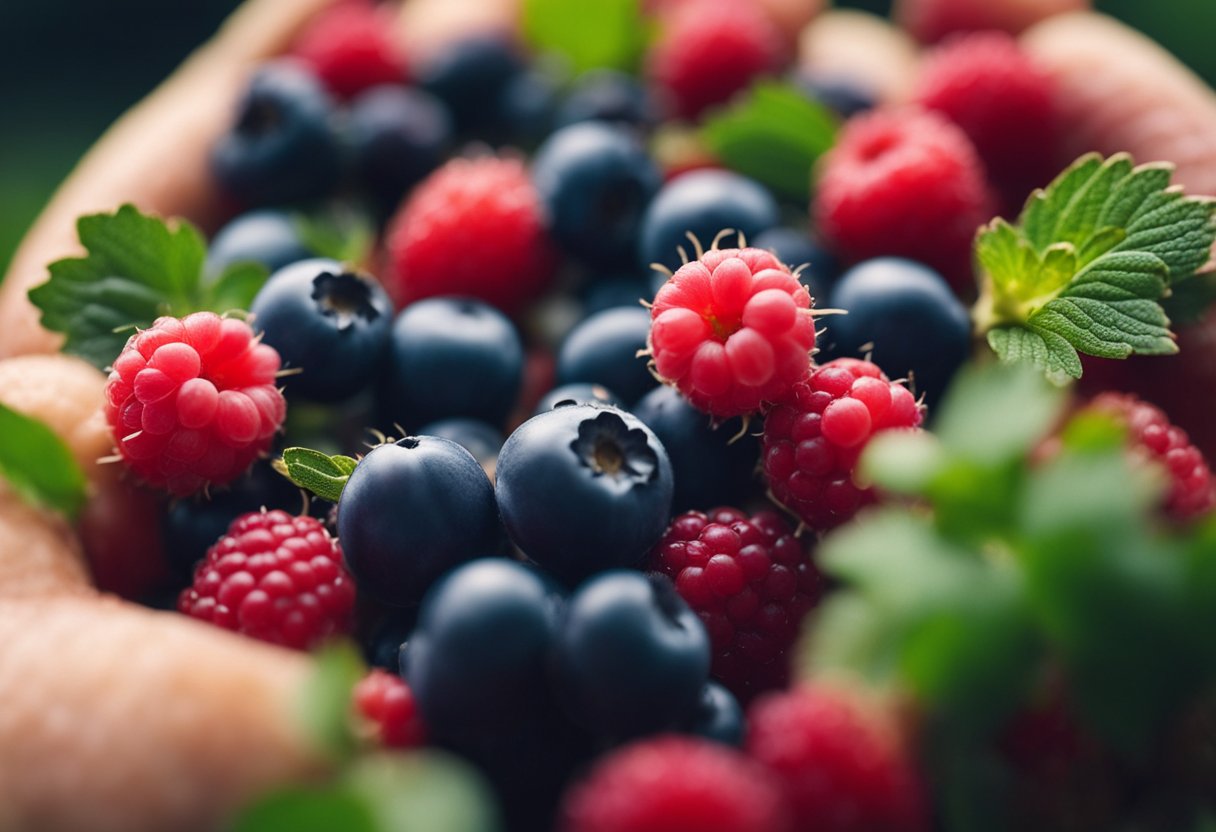
As per the botanical definition, berries are simple fruits that develop from a single ovary of a flower.
They have a fleshy pulp and seeds encased within a pericarp, which is divided into three layers: exocarp, mesocarp, and endocarp. In this section, I will discuss the structure of seeds in berries.
Seeds in Aggregate Fruits
Aggregate fruits such as raspberries and blackberries are composed of many small, individual fruits called drupelets, each containing a single seed.
The drupelets are attached to a central core, which is the receptacle of the flower. The seeds in these fruits are small and hard, and they are usually referred to as pits or stones.
Seeds in Multiple Fruits
Multiple fruits such as strawberries and pineapples are formed by the fusion of many ovaries from different flowers.
In these fruits, the seeds are located on the surface of the fruit and are not enclosed in a pit or stone. The seeds are attached to a receptacle, which is the enlarged base of the flower.
Berries are classified as simple fruits, and they are indehiscent, meaning that they do not split open to release the seeds when ripe.
The pericarp of the berry remains intact, and the seeds are dispersed through other means such as animal consumption or wind dispersal.
In conclusion, berries have a unique seed structure that is different from other types of fruits. The seeds are enclosed within a pericarp and are either located on the surface of the fruit or within small drupelets.
Understanding the structure of seeds in berries is important for plant classification and understanding the biology of fruit development.
Nutritional Value of Berries
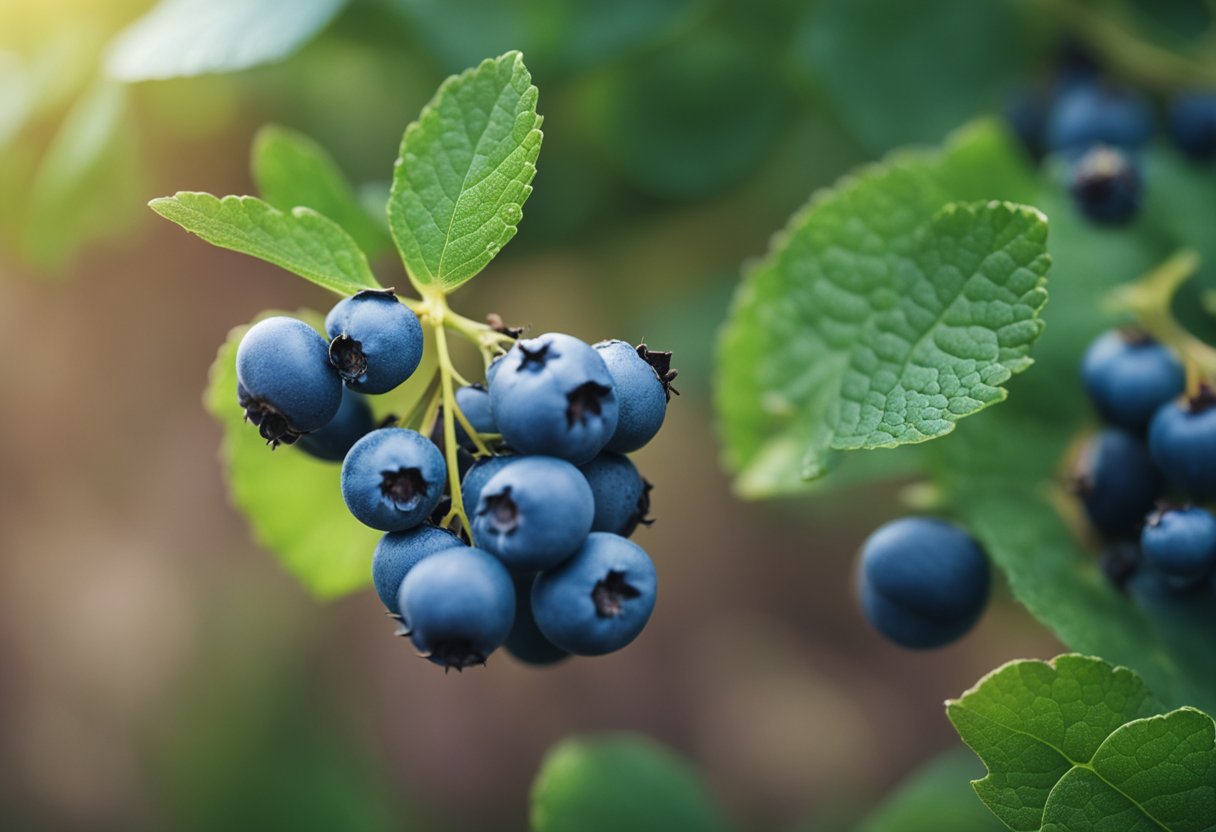
As a nutritionist, I highly recommend incorporating berries into your diet due to their numerous health benefits. Berries are a superfood packed with antioxidants, fiber, and various vitamins and minerals.
Berries are known for their high levels of antioxidants, which help protect against cell damage caused by free radicals.
Free radicals can cause oxidative stress, which may lead to chronic diseases such as cancer, heart disease, and Alzheimer’s disease.
Berries also contain high levels of vitamin C, which acts as an antioxidant and helps boost the immune system.
Berries are an excellent source of fiber, which is essential for maintaining a healthy digestive system. Fiber helps regulate bowel movements, prevents constipation, and may reduce the risk of colon cancer.
Berries also contain vitamin K, which is essential for blood clotting and bone health.
Incorporating berries into your diet is easy. You can enjoy them fresh, frozen, or dried. Berries are also a versatile ingredient that can be used in smoothies, salads, and desserts.
To summarize, berries are a nutrient-dense food that offers numerous health benefits. They are an excellent source of antioxidants, fiber, and various vitamins and minerals.
By incorporating berries into your diet, you can help reduce the risk of chronic diseases and maintain a healthy digestive system.
Culinary Uses of Berries
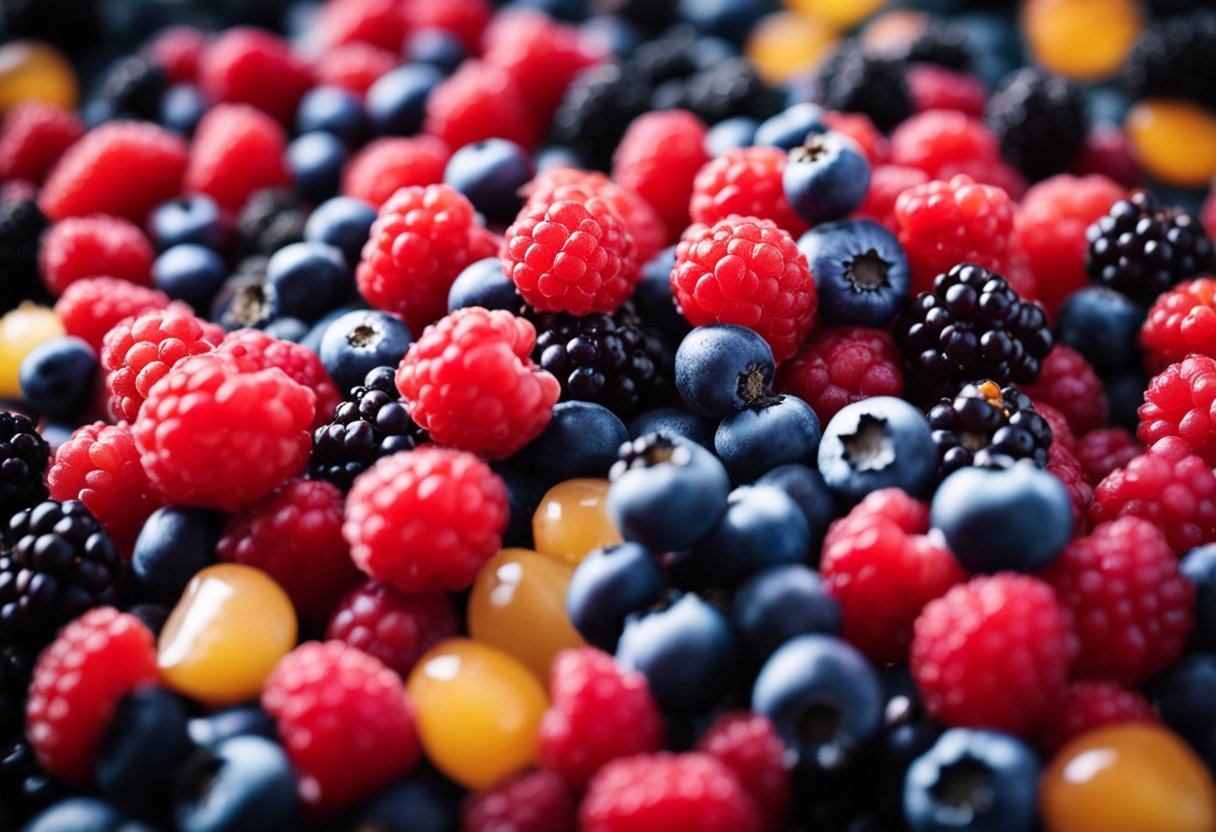
As a food lover, I enjoy experimenting with different types of berries in my recipes. Berries are versatile fruits that can be used in a variety of ways. Here are some culinary uses of berries that you should try out:
Cakes
Berries can be used to make delicious cakes. You can add them to the batter or use them as a topping. Blueberries, raspberries, and strawberries are great options for cakes. They add a burst of flavor and color to the cake.
Jam
Berries can be used to make jam. You can use a single type of berry or a combination of different berries.
To make jam, you need to blend the berries and cook them with sugar. The result is a sweet and tangy spread that can be used on toast or as a topping for desserts.
Pies
Berries are a popular choice for pies. You can use them to make a classic berry pie or mix them with other fruits like apples or peaches.
Blueberries and raspberries work well in pies as they hold their shape when cooked.
Blends
You can blend different types of berries to make a delicious smoothie or juice. Berries are packed with antioxidants and are a great addition to any drink. You can add them to yogurt or milk for a healthy breakfast option.
Grind
Berries can be ground and used as a seasoning for savory dishes. For example, dried cranberries can be ground and used as a seasoning for chicken or pork. They add a sweet and tangy flavor to the dish.
In conclusion, berries are a versatile fruit that can be used in a variety of ways. From cakes to jams, pies to blends, and even as a seasoning, berries are a great addition to any recipe.
Growing and Cultivating Berries
Growing and cultivating berries is an enjoyable and rewarding experience for any gardener. Berries are easy to grow and require minimal maintenance once established.
When planting berries, it is important to choose a location that receives at least 6-8 hours of full sun per day. Berries require well-draining soil that is rich in organic matter.
If your soil is not well-draining, consider planting in raised beds or containers.
Berries can be planted in the spring or fall, depending on the variety. When planting, be sure to space your plants according to the specific requirements of the variety you are planting.
Some varieties, such as raspberries, require a trellis or support system to keep the canes upright.
Cultivated berries, such as blackberries and raspberries, produce fruit on second-year canes. To ensure a bountiful harvest, prune out the old canes after they have finished fruiting, leaving the new canes to produce fruit the following year.
Berries can also be grown in partial shade, but may produce less fruit than those grown in full sun. If you are planting in a shady area, be sure to choose a variety that is tolerant of shade.
In summary, growing and cultivating berries is a simple and rewarding experience.
Choose a sunny location with well-draining soil, plant according to the specific requirements of your chosen variety, and enjoy a bountiful harvest for years to come.
Berries vs Other Fruits
When it comes to fruits, there are many different types, each with their own unique characteristics. Berries are a type of fruit that is often confused with other fruits due to their similar appearance.
In this section, I will compare berries to other common fruits like apples, bananas, tomatoes, and watermelons.
Berries vs Apples
Apples are a type of fruit that is commonly eaten raw or used in cooking and baking. Unlike berries, apples are not classified as berries because they have a core and are formed from multiple ovaries.
Apples also have a tough skin and are not as juicy as berries.
Berries vs Bananas
Bananas are a type of fruit that is often consumed as a snack or used in baking. Like apples, bananas are not classified as berries because they are formed from multiple ovaries.
Bananas also have a thick skin and are not as juicy as berries.
Berries vs Tomatoes
Tomatoes are often thought of as a vegetable, but they are actually a type of fruit. Unlike berries, tomatoes are formed from multiple ovaries and have a fleshy interior with seeds.
Tomatoes also have a tough skin and are not as sweet as berries.
Berries vs Watermelons
Watermelons are a type of fruit that is often consumed in the summertime. Unlike berries, watermelons are formed from multiple ovaries and have a thick rind.
Watermelons also have a juicy interior with seeds, but the seeds are much larger than those found in berries.
In conclusion, while berries share some similarities with other fruits, they are unique in their own way. Berries have a fleshy fruit wall that surrounds one or more seeds and are formed from a single ovary.
Other fruits like apples, bananas, tomatoes, and watermelons are formed from multiple ovaries and have different textures and structures.
The Science Behind Berries
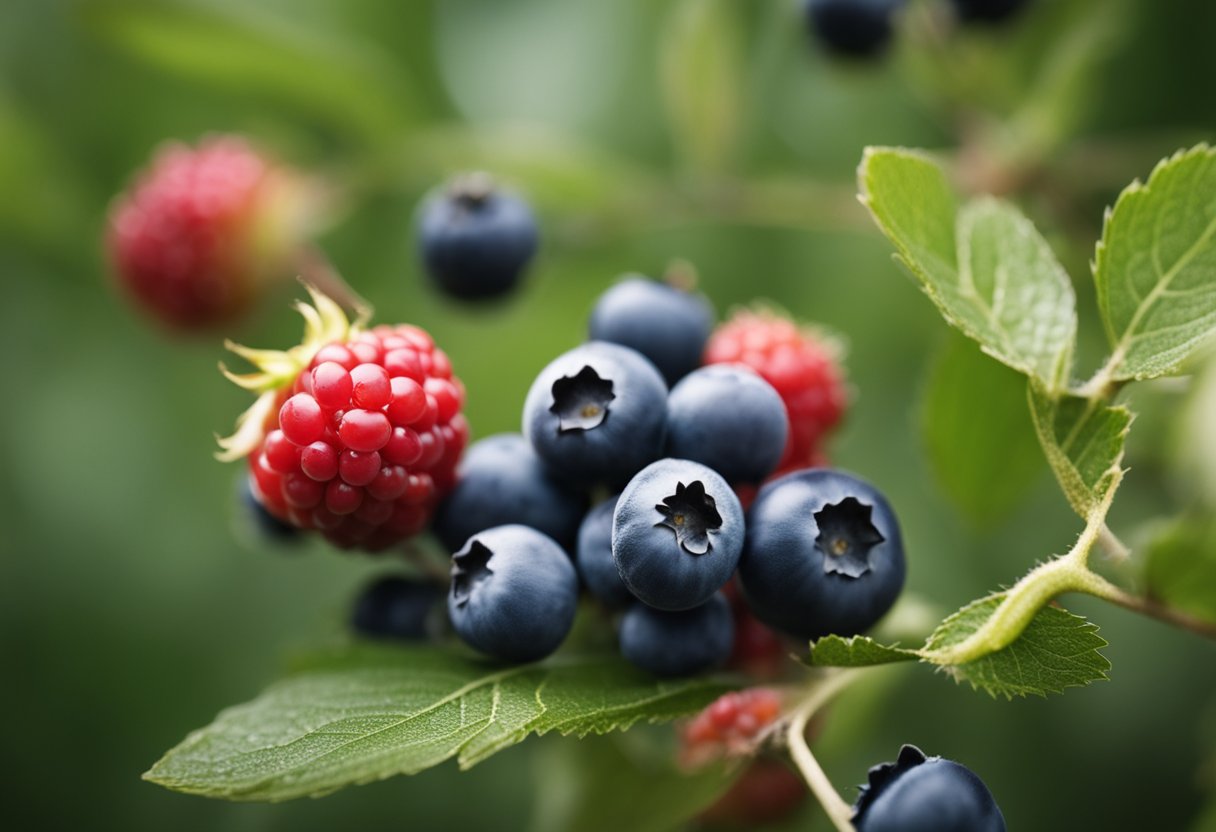
As a fruit that is produced from the ovary of a flower, berries are a type of fruit that contain seeds and fleshy pulp.
Botanically speaking, a berry is a simple fruit that is formed from a single ovary, with the seeds embedded in the fleshy pulp.
Berries are a diverse group of fruits that come in many shapes, sizes, and colors, and they contain a wide variety of nutrients and phytochemicals that are beneficial for human health.
One interesting fact about berries is that they are an example of an accessory fruit. This means that while the fruit itself is derived from the ovary of the flower, other parts of the flower also contribute to the final structure of the fruit.
For example, in strawberries, the fleshy “fruit” that we eat is actually the enlarged receptacle of the flower, while the tiny “seeds” on the outside are actually the true fruits of the plant.
Another type of fruit that is often confused with berries is the pepo. Pepos are a type of fruit that is derived from an inferior ovary, which means that the ovary is located below other flower parts, such as the sepals, petals, and stamens.
Examples of pepos include cucumbers, pumpkins, and watermelons. While pepos may look similar to berries on the outside, they have a different internal structure and are not considered true berries from a botanical perspective.
Some berries have unique features that set them apart from other fruits. For example, the aril is a specialized structure that is found in some types of berries, such as pomegranates and passionfruit.
The aril is a fleshy, seed-bearing structure that is often brightly colored and juicy, and it is used to attract animals that will eat the fruit and disperse the seeds.
Overall, the science behind berries is complex and fascinating, and there is still much to learn about these delicious and nutritious fruits.
By understanding the botany of berries, we can appreciate their unique features and better understand their role in our diets and in the natural world.
Frequently Asked Questions
What fruits are classified as berries?
Botanically speaking, a berry is a fruit that develops from a single ovary of a flower and has multiple seeds embedded in the flesh.
Some common fruits that are classified as berries include strawberries, blueberries, raspberries, blackberries, cranberries, and grapes.
Do all berries have seeds?
Yes, all true berries have seeds. The seeds are usually small and can be found embedded in the flesh of the fruit.
Are there any berries that have pits instead of seeds?
Yes, some fruits that are commonly referred to as berries, such as cherries and plums, have pits instead of seeds. These fruits are not true berries from a botanical standpoint.
Which berries have the most seeds?
The number of seeds in a berry can vary depending on the type of fruit. For example, a strawberry typically has around 200 seeds on its surface, while a raspberry can have as many as 1,200 tiny seeds.
Are there any seedless berries?
There are some seedless varieties of certain berries, such as seedless grapes and seedless watermelons. However, these fruits are not true berries from a botanical standpoint.
What is the purpose of seeds in berries?
The seeds in berries serve the purpose of reproduction. When the fruit is consumed by an animal, the seeds are dispersed in the animal’s feces, which helps to spread the plant’s genetic material and ensure its survival.
Additionally, the seeds contain important nutrients and minerals that are beneficial for human health.




